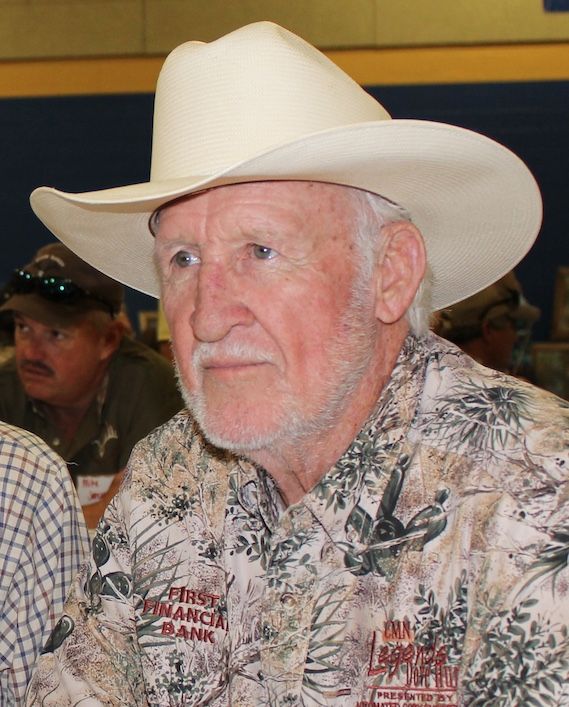Gentlemen, why do we keep beating around the bush about the scientific and biological properties of Chronic Wasting Disease and Old World Scrapie, both having the molecular profile of PrPSc. The agricultural world has known about scrapie in sheep since 1732, and without the technique of western blotting, we would still think of CWD as the coming of another “mad cow” disease. However, we HAVE HAD western blotting since 1979, which lets us peer into proteins to see what they possess. Now we know that CWD and scrapie are virtually one and the same.
There is a distinct difference between science and biology. Science says that PrPSc will eventually kill a cervid (deer), and can spread if unchecked. Biology asks what cervid, when, where, clinical duration, how many, and effect (if any) on humans. These are obvious differences in science and biology when dealing with CWD/scrapie as it affects whitetails, mule deer, and people.

Scientists have found with western blot that CWD is indistinguishable from scrapie, which brings up two significant questions that vilify the importance of CWD to the deer industry of Texas (according to Dr. James Kroll). Anyone who knows the basics of CWD/scrapie should endorse the following statements.
- Does PrPSc (CWD and scrapie) have the properties to harm deer herds? NO! Deer herds are flourishing at carrying capacity statewide, and are up by 500,000 since the TSE was found in a Texas mule deer in 2012. The disease does not affect reproduction, and fawn recruitment far outweighs annual losses of over one-million deer to hunting, predation, accidents, nutrition, viruses and diseases. The present Texas whitetail population is estimated at 5 million on 100 million acres of habitat.
Most important to the control of a virus or disease is deer herd “turnover”, where deer are replaced every 3-5 years through mortality and recruitment, preventing viruses and diseases from lingering in the herd. Texas deer hunting has never been better!
- Does PrPSc (CWD and scrapie) have the properties to be harmful to human health? NO! Texas deer hunting families and friends consume a minimum of 15,000,000 pounds of venison each year. Nationwide, 11.4 million deer hunting families consume 100,000,000 pounds of venison each year. Not one case of illness has occurred anywhere from eating “Americas Healthy Red Meat.”
So, where is the problem? Are we beating a dead horse?
Texas Parks and Wildlife (Wildlife Division) seems to be hung up on a mild TSE of cervids (deer, elk, moose, reindeer, etc.) that is actually irrelevant and immaterial to the $4 billion deer industry in Texas! The mysteries of CWD/scrapie are gone — recent research has opened the door for asking, “Why does TPWD spend so much effort and money, and expend so much misery on landowners, deer breeders, and hunters to control a disease that is so insignificant to the deer hunting industry? Is there a hidden agenda somewhere?
Scientists at USDA, Ames have revealed that CWD is nothing but scrapie in cervids. Since this scientific discovery has resulted from the use of western blotting (developed in 1979), it is possible that cervids have been susceptible to PrPSc since Biblical days, when sheep were the dominant animal for wool and food in the world of that day.

This brings up the old idiom, “If you look for something long enough and hard enough you will find it, if it is there.” Scrapie has been here since Columbus brought Spanish sheep to the West Indies in 1492, and the Colonists brought sheep from England in 1607.
Truth is, Chronic Wasting Disease is the result of a scientific blunder in 1967, when a mule deer in a research pen with sheep and elk at Colorado State became ill and incapacitated. Research on that mule deer illness was continued in the early ’80s by Dr. Elizabeth Williams at Colorado State, who unwittingly declared the finding of a new TSE that she named, “Chronic Wasting Disease.”
Dr. Williams’ team did not have the knowledge or equipment to reveal the mule deer as having scrapie, because IHC and Elisa tests only show folded proteins — not what the folded proteins signify. She aggressively published research reports on the “new” malady, and it was registered as Chronic Wasting Disease, a reportable transmissible spongiform encephalopathy (TSE), with no molecular profile at that time.
But now we know different. There is no indication anywhere that PrPSc (CWD/scrapie) is harmful to cervid herds, or that the TSE is detrimental to human health. Therefore, CWD/scrapie should be treated as one of the many diseases that often plague Texas deer. Epizootic Hemorrhagic Disease (EHD), blue tongue, and anthrax (rapid killers) appear to be more important to Texas deer than clinically-slow CWD/scrapie.
So, the question is, why?
Horace Gore spent the majority of his career as a white-tailed deer biologist in Texas. He served many years as White-tailed Deer Program Leader for the Texas Parks & Wildlife Division and was later editor of the Journal of Texas Trophy Hunters Magazine. His research also extended into bobwhite quail populations and other species.

